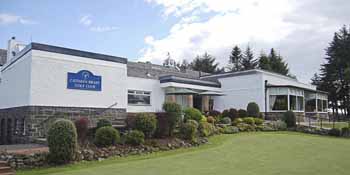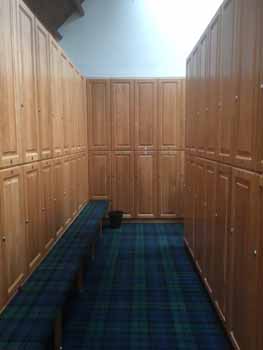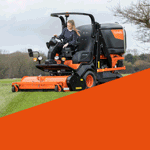Club profile: Cathkin Braes Golf Club
The oldest golf club in Glasgow has seen a number of major improvements since the 19th century, and that has continued this year with an investment in its clubhouse

There are few Glaswegians who haven’t admired their fine city from the hills of Cathkin Braes, a wild and wonderful open space that has forged itself a place in the heart of local folklore.
Sitting more than 650 feet above sea level and offering panoramic views over Glasgow to the Campsies and the Arran Hills to the west, it’s an area where dwellers of Scotland’s largest city flock to escape the busy metropolis.
As well as the bustling city below, the Braes offers fine views of mountain peaks such as Ben Lomond, Ben Ledi and Goat Fell, which are often visible on clear days.
City folk aren’t the first to have enjoyed its tranquility. During the Iron Age it was home to the ancient Celtic tribe known as the Damnonii who left behind several cairns, including Queen Mary’s Seat, close to where Mary Queen of Scots is reputed to have observed the defeat of her forces at the Battle of Langside in 1568.
The area is also a haven for natural beauty, boasting an abundance of wildlife. Both the Big Wood and Cathkin Braes Park Wood are ancient sites visible on the skyline for many miles around.
Other highlights include marshes, heath and scrub, grasslands and hedgerows, and it’s of no surprise the braes were declared a site of importance for nature conservation.
In 1887 millionaire James Dick gifted the eastern part of the area stipulating that the open space must be retained in a natural state and open for public enjoyment and is now known as Cathkin Braes Country Park.
Needless to say, the land is perfect for golf and the area has been home to the oldest club in Glasgow, Cathkin Braes Golf Club, established in 1888 by a group of regular lunch companions at the old Liberal Club in Glasgow.
Initially it comprised of nine holes, yet members clamoured for more. The course was remodelled 1891, and in 1905 the full 18 holes were opened.
In 1921 the club invited the now famous James Braid to rework some of the holes and extensive alterations were made, mainly to the first four holes.
The 6,209-yard, par 71, moorland course is, despite its name, relatively flat but there are some tricky tree-lined holes, such as the par-three fifth where players must overcome a loch to reach the well-protected green.
The opening five holes and closing couple of holes are moorland in character, with gorse and rocky outcrops flanking the fairways as they pitch and roll across uneven terrain. The remainder of the course is more parkland in aspect, where tree-lined holes gently rise and fall across an undulating landscape.
The original clubhouse of 1888 was an old farm shed – a far cry from the magnificent facilities enjoyed today.
In fact it underwent several modifications over the years. The first proper building was constructed in 1891, which was extended in 1897 and again in 1911 as membership grew. A new £5,000 clubhouse was opened in 1935 and in 1972 another major extension was completed.

This year the clubhouse underwent further extensive refurbishment, including a major improvement to the large ladies’ and gents’ changing rooms.
The club selected industry leader Ridgeway Furniture to complete the works.

The old, dark, small lockers were removed and replaced with a selection of lockers large enough to hold modern tour bags, complemented by holdalls and wardrobes, and finished with bench seats. The club selected the classic raised and fielded doors, finished in light oak.
The result is that the area has been totally transformed and the club and its members are delighted.

Club manager Bill Bain said: “We are delighted with the work done by Ridgeway in our locker room refurbishments; the facilities offered to our members are now in keeping with the first class standards set for our course and clubhouse.
“The transformation in the locker rooms is amazing and our members can’t believe how bright and spacious the areas are compared to what was there previously. Without a doubt the investment made in Ridgeway’s lockers has been money very well spent.”

Since its inception Ridgeway has manufactured tens of thousands of lockers that have been installed in some of the most prestigious golf clubs in the world.
The company has seen turnover increase by more than 100 per cent over the past five years and has invested more than £500,000 in a new factory increasing its capacity by over 50 per cent. The facility, at more than 18,000 square feet, means the company is now the UK’s largest dedicated manufacturer of wooden lockers.















Let me tell You a sad story ! There are no comments yet, but You can be first one to comment this article.
Write a comment